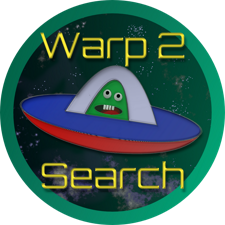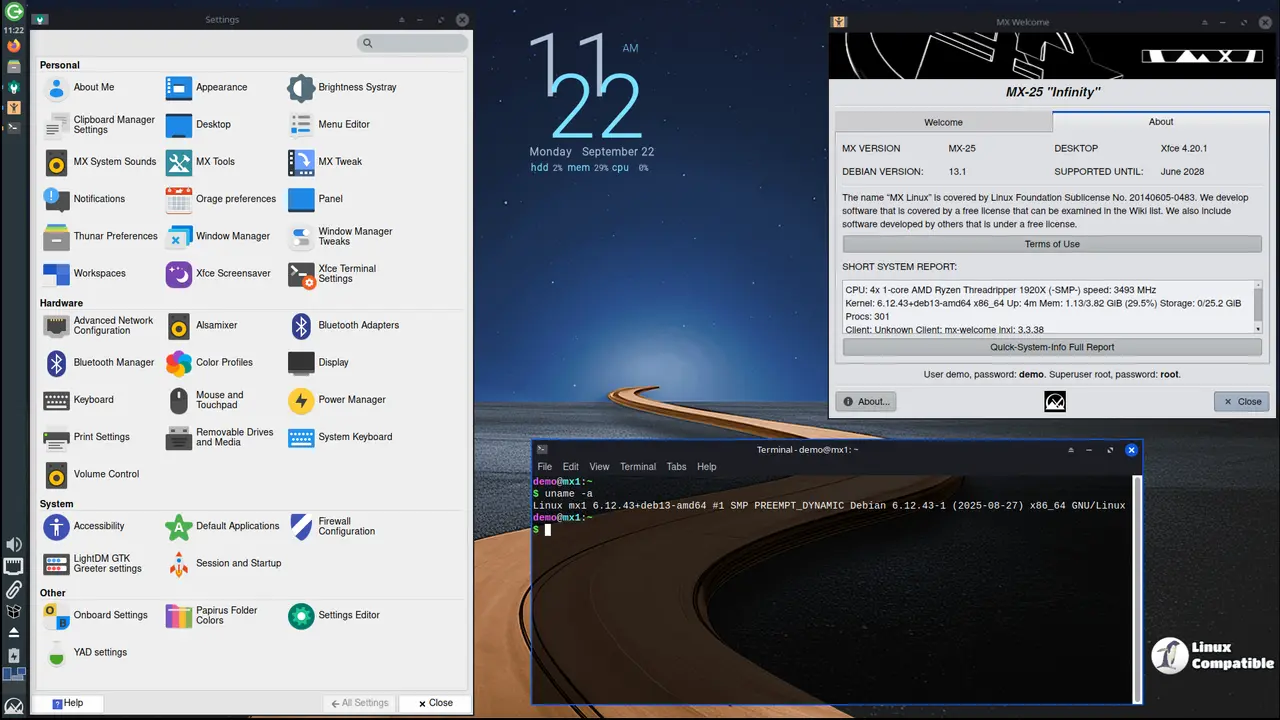MX Linux has announced the release of MX-25 "Infinity" beta 1, which is based on Debian 13 Trixie. This beta version combines elegant desktop environments with robust stability and performance, and it is the result of collaboration between the antiX and MX Linux communities. Users are encouraged to test this beta version and provide feedback, particularly regarding the installer and MX tools, especially concerning popular applications in the MX Package Installer.
The MX-25 beta 1 features an intuitive graphical interface and retains the Live USB and snapshot capabilities from antiX, making system remastering easy for users. A wealth of support is available through documentation, videos, and an active user forum. Importantly, the beta includes two init system options: systemd and sysVinit, with the latter available for Xfce, Xfce-ahs, and Fluxbox editions clearly marked in their filenames.
This release highlights significant updates, including the use of Xfce 4.20, Fluxbox 1.3.7, and KDE Plasma 6.3.6, with most ISOs featuring the Debian stable kernel version 6.12.43. The Advanced Hardware Support (AHS) versions utilize the Liquorix kernel version 6.15. Enhancements to functionality with systemd have been made, and MX Tools have been migrated to Qt6, alongside various bug fixes and translation updates for applications.
A key change is the adoption of the new deb822 format for source information, supported by the MX Repo Manager. The traditional updater tool has been upgraded to mx-updater, which offers similar features with additional options. The installer includes a new capability to replace existing Linux installations, although it does not work with encrypted setups. New optimizations have been made for setting up zram swap devices as well.
A notable addition is the support for 64-bit UEFI Secure Boot installations, contingent on using a signed kernel. The KDE Plasma edition has seen changes in response to new configuration options, with Wayland set as the default session. The Fluxbox edition has also been enhanced, improving panel configurations and user experience.
The development team is particularly focused on testing the installer and identifying bugs in MX tools as part of the feedback process. However, some known issues include the installer icon not appearing on Fluxbox, UI bugs in the MX Package Installer, and certain actions in the Dolphin file manager being unavailable.
Users can download the beta versions for Xfce, Plasma, and Fluxbox, and their feedback will be crucial in refining the final release of MX-25.
In conclusion, MX Linux 25 Beta 1 represents a significant update in the MX Linux line, focusing on user experience, stability, and performance. As users test this beta version, their contributions can help ensure that the final release meets the community's expectations and needs
The MX-25 beta 1 features an intuitive graphical interface and retains the Live USB and snapshot capabilities from antiX, making system remastering easy for users. A wealth of support is available through documentation, videos, and an active user forum. Importantly, the beta includes two init system options: systemd and sysVinit, with the latter available for Xfce, Xfce-ahs, and Fluxbox editions clearly marked in their filenames.
This release highlights significant updates, including the use of Xfce 4.20, Fluxbox 1.3.7, and KDE Plasma 6.3.6, with most ISOs featuring the Debian stable kernel version 6.12.43. The Advanced Hardware Support (AHS) versions utilize the Liquorix kernel version 6.15. Enhancements to functionality with systemd have been made, and MX Tools have been migrated to Qt6, alongside various bug fixes and translation updates for applications.
A key change is the adoption of the new deb822 format for source information, supported by the MX Repo Manager. The traditional updater tool has been upgraded to mx-updater, which offers similar features with additional options. The installer includes a new capability to replace existing Linux installations, although it does not work with encrypted setups. New optimizations have been made for setting up zram swap devices as well.
A notable addition is the support for 64-bit UEFI Secure Boot installations, contingent on using a signed kernel. The KDE Plasma edition has seen changes in response to new configuration options, with Wayland set as the default session. The Fluxbox edition has also been enhanced, improving panel configurations and user experience.
The development team is particularly focused on testing the installer and identifying bugs in MX tools as part of the feedback process. However, some known issues include the installer icon not appearing on Fluxbox, UI bugs in the MX Package Installer, and certain actions in the Dolphin file manager being unavailable.
Users can download the beta versions for Xfce, Plasma, and Fluxbox, and their feedback will be crucial in refining the final release of MX-25.
In conclusion, MX Linux 25 Beta 1 represents a significant update in the MX Linux line, focusing on user experience, stability, and performance. As users test this beta version, their contributions can help ensure that the final release meets the community's expectations and needs
MX Linux 25 Beta 1 released
MX Linux has released the MX-25 "Infinity" beta 1, built from Debian 13, which combines elegant desktops with high stability and performance. This release includes various updates, such as Qt6 migration for MX Tools, new deb822 format support, and improvements to the installer, including UEFI Secure Boot support. Users can test the beta 1 and provide feedback on areas like the installer and MX tools, particularly for popular app entries in MX Package Installer.


